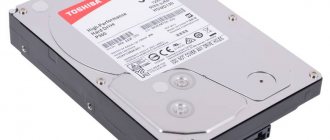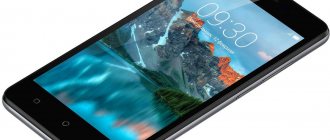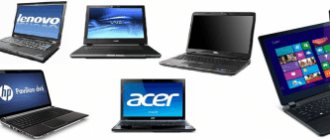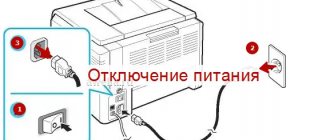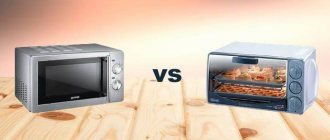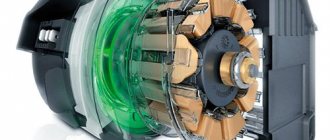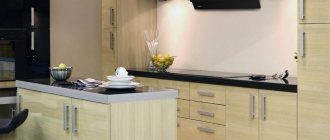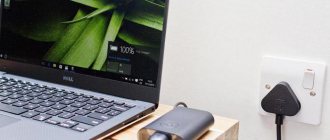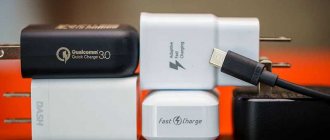Portability
The visible difference between a netbook and a laptop is its significantly smaller display size, body thickness, and weight. If the diagonal of a standard laptop can reach 20 inches and fully replace a monitor, for example, an all-in-one, then for a netbook this parameter is 12 inches maximum. This makes the device lighter and more compact. However, the small screen will not allow you to enjoy a detailed image, so watching movies, playing games and working with spreadsheets on it is not very convenient.
Modern models have such a thin body that the netbook fits into any bag or even pocket. This feature is good for travelers, because the netbook is convenient to use in cafes, transport and other places. It was created for those who need to quickly type a message, read an article, or view files, even in extreme situations.
Interesting read: How to choose a netbook
What is the difference between a netbook and a laptop?
When choosing this or that device, you need to decide on the parameters that are important for your own comfort. We will analyze
- dimensions;
- weight;
- battery life;
- productivity, power;
- screen, keyboard;
- amount of RAM;
- presence of ports, optical drive.
Dimensions and weight
The main difference between a netbook and a laptop is its dimensions. You can solve complex problems on a laptop; the large screen makes work more comfortable; the comfortable keyboard makes it easy to type large texts, format large tables, and edit photo and video files. But the weight of such a device together with the bag is more than three kilograms. It's a bit heavy to carry around with you all the time.
It's easier to take a mini laptop with you. The average weight including the bag is up to 2 kilograms. But for the sake of convenient dimensions, I had to sacrifice the size of the screen and keyboard.
Average device sizes:
- diagonal of standard laptops is 15 (or more);
- the maximum value for netbooks is 12 (some call the number 10);
- from 12 to 15 – ultrabook.
Which device is more comfortable to work on?
For solving some problems, familiar laptops are more suitable, while others are more suitable for their smaller brothers.
Pros of the laptop:
- Big screen. An important parameter for those who work a lot at the computer. The font and pictures are larger, you can open several windows at once or expand one program to full screen. More details are visible at the same time.
- Standard keyboard. Almost the same as what a PC is equipped with. Convenient layout, presence of all functional buttons, dedicated number pad.
- Full range of functionality. Availability of all necessary ports, optical drive, webcam.
- High power. The laptop is able to solve complex, multi-step problems. Some models are almost no different from a desktop computer.
Disadvantages of the laptop:
- Short battery life. A powerful processor and a large screen cannot be economical. Therefore, the battery drains quickly. Two, three, four hours... That's it.
- High price. A laptop filled with good functionality costs significantly more than its “smaller” brother.
Pros of a netbook:
- Battery life. The devices have less powerful, and therefore more economical, processors. Therefore, their battery life increases. Some models can work without connecting to the network for twelve hours.
- Standard ports. VGA, HDMI, LAN, USB inputs, audio ports.
- Low price. The cost of a good net is one and a half to two times less than a good laptop.
Disadvantages of a netbook:
- Small screen. A small diagonal makes it difficult to work with large tables, images, and videos.
- Inconvenient keyboard. By reducing the dimensions, manufacturers sacrificed a full-fledged keyboard. Firstly, the buttons themselves have become smaller. Secondly, the numeric keypad and some function buttons have disappeared. Printing large amounts of text is not very convenient. Small messages on networks are just right.
- Low power. The equipment does not support heavy games or some programs. Copes well with office applications and Internet access. But for working with graphics or programming, the netbook is rather weak.
- No optical drive. Fewer USB inputs.
Where is there more productivity?
Even the weakest laptop has better performance than a new netbook. Small sizes are to blame for everything. It is difficult to fit a good filling into a small device. Therefore, they install only the most necessary things.
Laptops usually have dual- and quad-core processors. Netbooks have single- and dual-core ones.
The amount of RAM on both devices is sufficient – 1-2 GB. To work with more complex programs you will need a capacious RAM, from 4 GB. And only laptop models can have such memory.
Technical characteristics or “iron filling”
When choosing a personal PC, size matters, but not as much as the technical parameters of the devices. The latest generation of laptops from famous brands also boasts an ultra-thin and mobile design. What is the difference between laptop and netbook hardware:
- Processor power . Portable personal computers are designed taking into account the fact that the device is intended not for full-time work, but for additional work. Therefore, developers are more focused on reducing the size than equipping the gadget with modern technologies. Often, the netbook lineup has an Intel Atom processor, which is one of the weakest on the market. The advantage of such equipment is low energy consumption, but the disadvantage is the inability to work with heavy programs.
Some compact laptops from the Apple, Lenovo and Asus brands also run on more powerful hardware - Core m3 and i3, but they are more expensive.
- Video card . The graphic capabilities of a netbook are limited, since the devices have a low-quality controller. Applications and games of the new type will not run on low-budget devices, and on more expensive devices the work will not be as fast and stable as on gaming laptops. Netbooks are not suitable for gamers and graphic designers, photographers and editors who work with complex programs.
- Hard drive size . Portable laptops have much smaller hard drive capacity and are not as fast. SSD drives in netbooks are less than 700 GB, while standard personal PCs can have up to 4 TB. This disk capacity is needed for those who work with a large number of files, download various programs, and watch a lot of audio and video content. To supplement office work or use the device for communicating on social networks, 200 GB, which are available in each netbook, is enough.
- Amount of RAM . RAM on modern laptop models, for example, Asus and Dell, reaches 4 GB, which is enough for work. Netbooks do not replace a computer and do not fill the need for powerful hardware. Designed for fast communication, they are more like a functional tablet with a keyboard. Therefore, if you need to work with a large number of files and programs open at the same time, then it is better to choose the largest volume of OP. For normal use without special loads, you can get by with 2 GB of RAM.
Characteristics of a netbook: how it differs from a laptop
Let's highlight the main features:
Purpose
The main thing that distinguishes the two devices is their primary task. The netbook was designed primarily for mobile use. Of course, no one forbids using a laptop in a cafe, traveling, studying or working. But since it is more bulky, it is therefore not so convenient for these purposes.
In addition, some laptop models can become a full replacement for a desktop computer. A netbook cannot do this. You can say this - it is an addition to the PC.
Therefore, when choosing a suitable laptop computer model, consider the purposes for which it will be used.
Portability
The first thing that catches your eye when choosing equipment is the size of the devices. This is the characteristic that defines the obvious difference between them.
So, the standard laptop screen diagonal is 15.6 inches. The size of the display depends on the diagonal of the display. In addition, models with larger dimensions can be found on sale. Their diagonal can reach 20 inches or more.
Reference. Most often, a large screen can be found on powerful gaming models. They are quite bulky and heavy, so they are intended for home use.
If we talk about a netbook, then for it this characteristic will be 12 inches maximum. This makes it light and compact.
Reference. It is worth keeping in mind that a small screen imposes certain limitations, because it is not able to provide a high-quality picture. Therefore, it is not very convenient to watch movies or work with text editors.
"Iron"
Of course, size plays an important role when choosing the right laptop option. However, they are not as significant as technical characteristics . In addition, the latest generation of laptops from some well-known manufacturers are also distinguished by their ultra-thin design and low weight.
What is the difference in the “stuffing” of a netbook and a laptop:
- CPU. The design of netbooks means that they will become an addition to a desktop computer, and not a full-fledged unit. Therefore, manufacturers equip them with compact, rather than powerful and modern components. This allows them to remain small in size. For example, many models of miniature netbooks are equipped with an Intel Atom processor, which is considered one of the least powerful of all the options presented. This “filling” makes the device economical and inexpensive, while making it impossible to work with “heavy” software. At the same time, some modern laptop models are equipped with a powerful processor, for example, Intel Core i5 or i7. It allows you to work with any programs, even professional software, and play games. However, such models are quite expensive.
- Video card. The miniature computer is equipped with a low-power controller. Therefore, it has limited graphics capabilities. Many programs and games simply cannot run on it. Therefore, if you work with “heavy” software, graphic editors, or like to play video games, give preference to laptops equipped with a powerful video card.
- Hard disk capacity. On some laptop models, the HDD capacity can reach 4 TB. At the same time, it is quite difficult to find a miniature computer on sale even with 700 GB of memory.
- RAM. The RAM of most modern laptop models reaches 4 Gb. This volume is quite enough for watching video files, working with a variety of software, and playing games. In addition, if necessary, the volume can be increased up to 32 Gb. Netbooks cannot boast of a large amount of RAM. For most models it does not exceed 2 Gb.
Keyboard
The keyboard of most laptops is similar to the one used to work with a personal computer. In addition, devices with a screen larger than 20 inches may have additional “gaming” keys.
If we talk about miniature models, their size imposes limitations. Therefore, the keyboard of such devices is devoid of some buttons. For example, here you will not find “hot” buttons or system keys. In addition, the buttons themselves are small, and the distance between them is not maintained. Therefore, it is not very convenient to type large texts on them.
Software
The low-power hardware of netbooks also affects the installed software. Compared to its older “brother”, it is weaker. Therefore, such devices are not suitable for normal operation. Linux OS is integrated on most models. It is lightweight and more optimized for working with low-power gadgets. More modern versions are equipped with a “stripped-down” version of Windows.
Reference. The configuration of the laptops allows you to install any version of the operating system.
Price
Even the most budget laptop will cost more than a netbook with average specs. Therefore, if your goal is to save money, buy a miniature computer. It will be a good assistant for communicating on social networks and Internet surfing.
Laptop and netbook keyboard
The larger the device, the larger the display and keys. Regular laptops have a functional keyboard similar to that of a desktop device, and models with a display larger than 20 inches are also equipped with special gaming keys.
As for netbooks, due to the small size of the case, the keyboard is incomplete and lacks some “hot keys”, additional numeric layout and device control buttons. The keys themselves are small and there is no space between them for convenient printing of large texts. If an office worker is faced with the choice between a laptop or a netbook, then the latter gadget is inferior to the former.
Difference between laptop and netbook software
The technical parameters of netbooks are weaker, so standard operating systems and programs are not suitable for their full operation. For smooth and productive use of the device, it is installed by default with Linux OS, which “weighs” less and is more optimized for low-power PCs.
The disadvantage of the system is the complexity of its operation, as well as the limited application market. For newer netbook models, a specially stripped-down Windows OS is installed. There is no such problem in laptops - you can install any user-friendly software system on them and it will work properly.
Which is better: netbook or laptop?
For full-time work in one place (home or office), as well as for movie nights and games, laptops are more suitable. They have more powerful technical specifications, larger display diagonals, and better graphics adapters, controllers and video cards. Even if the model is low-budget, over time it is improved and more modern “filling” is installed. The battery capacity is enough to complete work processes in the event of a sudden voltage failure and loss of power supply, and the device is used from the mains.
Netbooks have gained popularity not because of their hardware, but because of their small size. The small, slim body weighing up to 1.5 kg is convenient to carry with you everywhere in a bag, briefcase or large pocket. It is indispensable during an urgent trip somewhere, traveling and a device for communication outside the home. The netbook is convenient to use in places without electrical coverage, because the battery charge lasts up to 10 hours of intensive work. The disadvantage of such a PC is that even if desired, it cannot be improved (the case cannot be disassembled, the parts are soldered in). Users will not be pleased with the lack of an optical drive for viewing files on disks and fewer USB ports.
Components of a netbook from a laptop
What is meant by configuration? This is the amount of RAM, the size of a hard drive or solid-state drive, the presence of discrete graphics and the presence and number of USB and other ports. Naturally, if there is free space on the periphery of the laptop case, there will be more ports. There are standard ports without which you can’t go anywhere. This is a VGA port - for connecting a monitor, an HDMI port for connecting to household appliances (to a TV, for example), LAN - a network port for connecting to the network via a cable (You can read how to crimp a network cable here) and audio ports - headphones and a microphone. These ports are standard and are probably present in all modern laptops, ultrabooks and, of course, laptops. The main difference here is the number of USB ports. The smaller the dimensions, the fewer ports you can build in.
The USB 3.0 standard, which is an evolution of the USB 2.0 standard, is now becoming widespread. It turns out that the more modern the netbook or laptop, the more ports of the third version are built in. This is great since USB 3.0's theoretical throughput is 10 times that of its predecessor. Typically, USB 3.0 ports are marked blue.
Oh yes, all mobile devices, without exception, have a slot for reading memory cards. There is no difference between a netbook and a laptop.
One more thing. I forgot to mention the drive for reading optical discs since I haven’t used it for probably six months now and it was removed from my desktop computer. This is where the main difference between laptops and netbooks lies. A netbook does not have a drive for reading optical discs , but the vast majority of laptops still have one. In general, this is a dying category of devices due to the emergence and significant reduction in the price of flash drives. Already a 64 GB USB drive can be bought for $35 and prices will naturally decrease. Cloud data storage services such as Dropbox, Google Drive and Yandex Drive are also becoming popular. Why write something to an optical disc if you can write it to a specific folder on your hard drive, the information will be automatically synchronized and will be available to you from anywhere there is Internet access. And the Internet is now almost everywhere. You can read and see how to measure Internet speed here.

